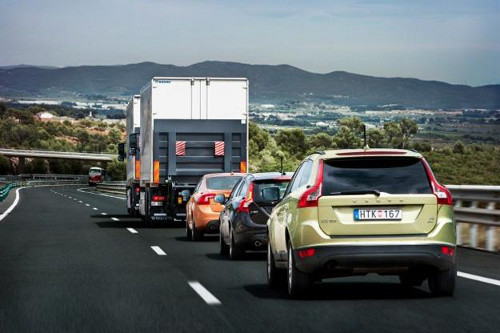A “road train” of cars moving in automated convoy has successfully completed a 125 mile journey in Spain. It’s the first time the technology has been tested on a public road.
This isn’t the same system used by Google for driverless cars to move independently, which was recently licensed for public testing in Nevada.
Instead this system (Safe Road Trains for the Environment, or Sartre), involves each car being electronically controlled. They then form a convoy, with the front vehicle controlling the speed and direction of others and each vehicle automatically keeping a safe distance from those in front and behind. Drivers can issue commands when they want to enter or exit the convoy, with the controlled cars adjusting to make enough room.
The idea isn’t simply to relieve the amount of concentration needed from drivers (and avoid the safety problems of tiredness), but also to make a more efficient use of space on the road and to take advantage of the cars being close enough to cut air drag, thus lowering fuel consumption by up to a fifth.
After a successful trial on private roads in Sweden last year, Volvo ran a test on Spain’s public roads using three cars and a lorry, with the lorry taking the lead both in terms of position and control. The BBC reports that the vehicles operated safely despite a gap of just nineteen feet, driving at 52 miles per hour.
Volvo’s Linda Wahlstroem said that although the system sounds like science fiction, most of the control technology such as cameras and sensors is already available in some form in vehicles that are already on sale. The breakthrough here is the software, and the only completely new addition to the cars is the installation of wireless networking equipment.
The long-term plan is to turn Sartre into a self-funding service with users paying a fee to be part of the convoy, which would be led by a professional driver.
There’s still no timetable for a public release yet, and lawmakers have yet to address the question of what if any changes would apply in the law governing drivers. With the Google project, Nevada has ruled that drivers would need a special license endorsement and would still be covered by drunk driving laws.

